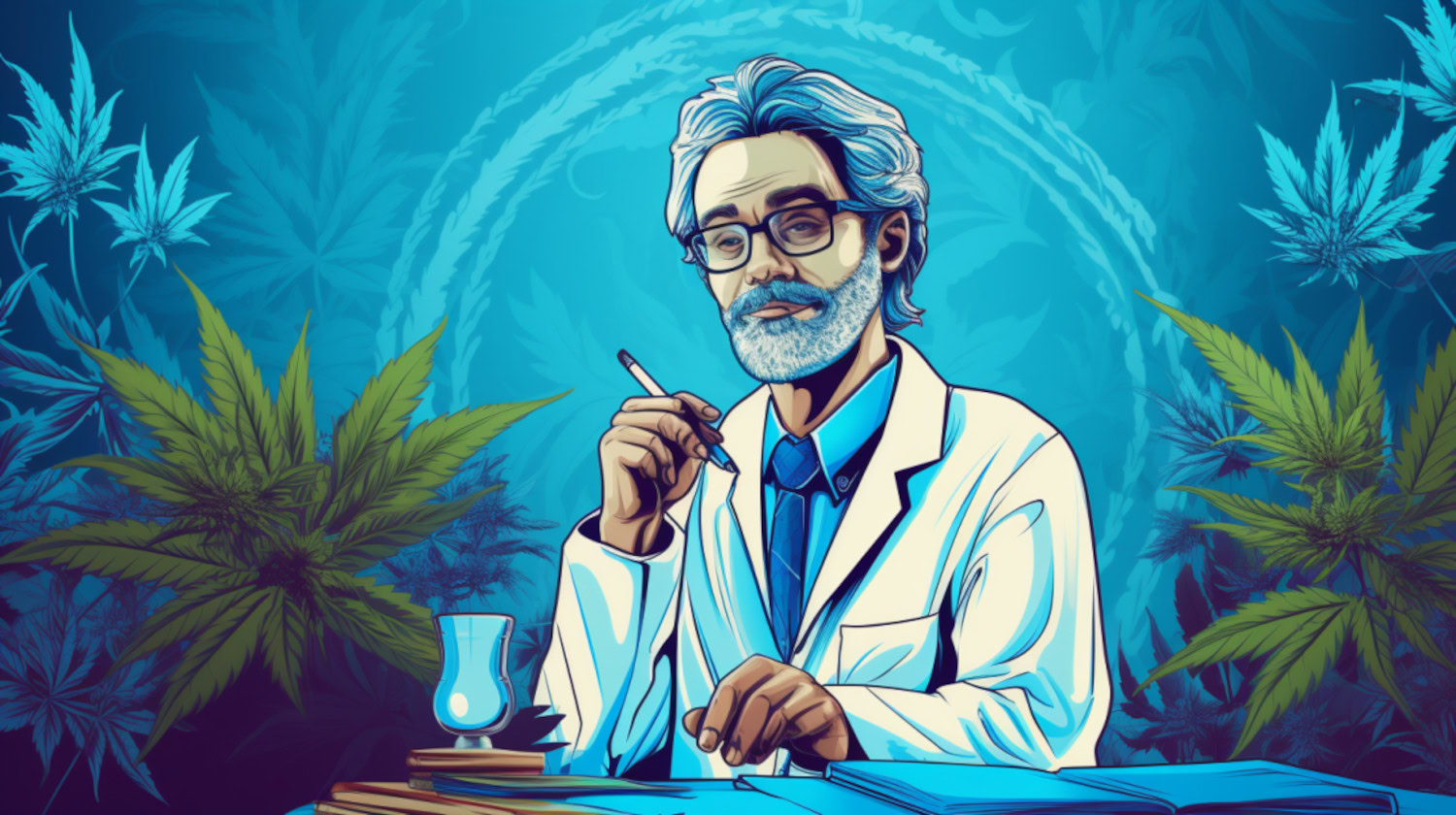In This Article
- Can Weed Help with Autism?
- Best Types of Edibles for Autism?
- How to Choose Edibles for Autism
- The 5 Best Edibles for Autism
- Charlotte’s Web™ Calm CBD Gummies
- Kiva Confections Sparkling Pear Prosecco Gummies
- Wyld Strawberry 20:1 CBD Gummies
- Kiva Milk Chocolate Bar
- Big Pete’s Treats Peanut Butter Cookies
- References
Key Takeaways
- Different edibles are better suited to treat individual symptoms. Look for ones best tailored to the autism symptoms you’re looking to treat.
- Low-THC, high-CBD options tend to be best, but every individual and their symptoms are different.
- Autistic individuals may have certain sensitivities. Finding edibles that do not trigger those sensitivities is essential.
Edibles offer various choices, including gummies, baked goods, chocolates, and beverages with varying concentrations of THC, CBD, and other cannabinoids. For autism, with its wide range of symptoms, these choices allow patients to tailor cannabis for their symptom relief outcome. However, for those new to cannabis, so many options can be confusing when choosing the best edibles for autism.
Of course, selecting an appropriate edible is more than just the taste or form; it’s about finding suitable cultivars and cannabinoid ratios that effectively address the specific symptoms of autism.
Can Weed Help with Autism?
Autism spectrum disorder (ASD) is a neurodevelopmental disorder with a wide range of symptoms. Common autism symptoms include difficulties with communication and interaction with others, restricted interests, and repetitive behaviors. These symptoms can significantly impact an individual's ability to function in various areas of life, including school and work.
Although the success of cannabis treatment for autism can vary widely by individual and symptoms, recent studies show cannabis to be a promising treatment for those on the spectrum.
One comprehensive review looked at how patients use different forms of CBD-dominant cannabis oil and pure CBD to treat ASD symptoms. The results show improvements in various challenging behaviors, like self-harm, anger, hyperactivity, sleep problems, anxiety, and social difficulties. The study highlighted that even pure CBD, taken at a specific dose, was effective in reducing these symptoms.1
Another study focused on children and teens with ASD given a CBD-rich cannabis oil with very low THC. Dosing did not exceed 400mg CBD and 20mg THC per day, based on the subject’s body weight. The parents of these children noticed significant improvements in behaviors like irritability, aggression, hyperactivity, and sleep problems. Notably, the children also showed better social skills, which were confirmed by both parents and doctors.2 These conclusions align with a separate study that showed noticeable improvements in symptoms, with three-quarters of the patients showing less hyperactivity, fewer self-injurious behaviors, and better sleep.3
One fascinating study used a personalized approach to treating children with ASD. The researchers tailored the cannabis treatment to each child's needs, using either THC-dominant or CBD-dominant products. Identifying 65 known biomarkers in typically developing children (TD), after a year of treatment, patients experienced positive changes in their biomarker levels linked to behavioral symptoms commonly seen in ASD.
Parents reported significant improvement in emotional control, behavior, attention, and repetitive behaviors like tantrums and aggression, demonstrating the effectiveness of individualized treatment plans.4
Additionally, research on other cannabinoids, such as cannabidivarin (CBDV), is beginning to show promise. In a study, rats exposed to chemicals that induce autism-like symptoms were treated with CBDV. The rodents treated with CBDV showed fewer social difficulties, repetitive behaviors, and less hyperactivity.5 While this research is still in the early stages, it suggests cannabinoids beyond CBD and THC may offer therapeutic benefits for ASD in the future.
Together, these studies suggest that cannabis, particularly when tailored to individual needs, may significantly improve various ASD symptoms. The flexibility in dosing strategies, the range of effective cannabinoid ratios, and the potential of emerging cannabinoids like CBDV all contribute to the growing evidence supporting cannabis as a viable treatment option for autism.
Best Types of Edibles for Autism?

Choosing the best type of edibles for autism depends on individual symptoms and diet preferences. Fortunately, edibles offer options, along with long-lasting dose effectiveness, preferred by many autistic people.
Some autistic individuals have limited food tolerance for different tastes, textures, appearances, and smells. They may want to experiment with edibles that compare to their preferred foods.
Edibles include flavor contrasts of sweet or savory, salty, sour, or spicy. Infused cooking oils or cannabutters add the needed cannabinoids with a more neutral taste and are adaptable to suit most diets and preferences.
Gummies are the preferred form of edibles among consumers and may be preferred over other forms with less consistent dosing. Edible effects can last hours, offering patients ongoing symptom relief without re-dosing. Although many favor the long-lasting effects, the slow onset of the impact of edibles made them less helpful for sudden anxiety.
Now, nano-technology formulations in select edibles reduce the onset time from an hour or more to less than 15 minutes, comparable to a tincture or vape.
Certain edible ingredients, such as artificial sugars, food coloring, or flavorings, might be best avoided due to sensitivities common among autistic individuals.
Making edibles at home allows the recipe to adapt to foods the patient prefers. For example, CBD gummies for autism are easy to make at home, with or without THC.
How to Choose Edibles for Autism
Where edibles are legal, they can be an appropriate choice to relieve some autism symptoms. Although the form of edible chosen is a matter of preference, selecting the right edibles for autism is based on the cannabinoid profile.
Edibles are food products infused with CBD, THC, or a combination of these or other cannabinoids. The edibles category can include chocolates, candies, gummies, baked goods, beverages, and lozenges with cannabis.
For guidance, ask other autistic individuals what they prefer. Be prepared to experiment with different varieties and products to find what works best for you. A budtender can offer product suggestions if you want gummies to relax or for daytime use.
When choosing edibles for autism, check for product quality and safety. Start by asking for the product's certificate of analysis (COA), which verifies third-party lab test results to confirm the accuracy of the cannabinoid and terpene profile. Check the labeling and packaging for precise ingredients, dosage, and expiration date information.
Many autistic individuals prefer edibles with a higher concentration of CBD due to their calming effects and ability to reduce anxiety without the intoxicating effects of THC.2 On the other hand, some may benefit from a balanced THC ratio, especially if they are managing symptoms like irritability or aggressive behavior.1
In studies, edibles with a ratio of 20:1 CBD:THC show promising results in treating autism symptoms and reducing irritability, aggressiveness, hyperactivity, and sleep disturbances.
Recommended use of edibles starts with a low dose and gradually increases until symptoms improve. A cautious approach is best, as individual reactions can vary widely. Edibles are labeled with their cannabinoid content in milligrams (mg), making it easier to calculate an appropriate dose.
Patients may consider making edibles at home. Advantages include greater control over the ingredients to align with dietary preferences or restrictions. Homemade edibles also provide the flexibility to experiment with different cultivars and cannabinoid ratios to find the most effective combination for managing autism symptoms.
The 5 Best Edibles for Autism

Some autistic individuals cite edibles as being effective for calming both mind and body. Based on patient reviews and cannabinoid content, the following are considered some of the best edibles for autism:
Charlotte’s Web™ Calm CBD Gummies
Charlotte’s Web™ Calm gummies are hemp-based and combined with botanical organic lemon balm. Each gummy includes 5mg CBD to promote relaxing anxiety relief without drowsiness. Made in the USA, these gummies are gluten-free with no artificial additives and a lemon-lime flavor. Reviewers cite the effectiveness of Calm CBD Gummies for daytime, bringing focus and tranquility to stressful situations, meetings, or travel.
Kiva Confections Sparkling Pear Prosecco Gummies
Getting ready for a social event but not quite in the mood? Enter a new go-to: Camino Sparkling Pear 'Social' gummies. Perfect for mingling at an office party, enjoying a night out with friends, or just wanting to relax and have fun, these may help face the anxiety of new people and situations. Each deliciously sweet gummy offers a unique ratio of 2mg THC to 6mg CBD, providing a gentle microdose of THC to help ease the nerves. Consumer reviews say these are an excellent choice for anyone new to edibles, with a gentle effect.
Wyld Strawberry 20:1 CBD Gummies
Wyld Strawberry gummies blend real fruit with a hybrid infusion of cannabis-derived CBD oil. Relaxed but focused effects come from a 20:1 ratio of CBD to THC. You may tackle daytime activities with focus or energy–and lower anxiety. The low THC may keep things calm without impairment, making them an potential choice for managing symptoms like irritability and hyperactivity.
Kiva Milk Chocolate Bar
This milk chocolate bar combines the delicious taste of chocolate with the therapeutic benefits of a mild dose of THC. Made with sustainably sourced cacao, the THC comes from Kiva’s cold water hash. It has good reviews for being a sweet treat for managing symptoms such as anxiety.
Big Pete’s Treats Peanut Butter Cookies
These cookies offer a nostalgic and comforting way to consume cannabis with a dose of THC. Big Pete’s Treats makes Peanut Butter Cookies out of their cannabutter, using a recipe Pete created in 2009. Cookies come in both indica and sativa to give you options for what effects you may prefer. The cookies are ideal for individuals who enjoy baked goods and want a more traditional edible experience.
References
- Silva EAD Junior, Medeiros WMB, Torro N, et al. Cannabis and cannabinoid use in autism spectrum disorder: a systematic review. Trends Psychiatry Psychother. 2022;44:e20200149. Published 2022 Jun 13. doi:10.47626/2237-6089-2020-0149 ↩︎
- Hacohen M, Stolar OE, Berkovitch M, et al. Children and adolescents with ASD treated with CBD-rich cannabis exhibit significant improvements particularly in social symptoms: an open label study. Translational Psychiatry. 2022;12(1):375. doi:https://doi.org/10.1038/s41398-022-02104-8
↩︎ - Barchel D, Stolar O, De-Haan T, et al. Oral Cannabidiol Use in Children With Autism Spectrum Disorder to Treat Related Symptoms and Co-morbidities. Frontiers in Pharmacology. 2019;9(9). doi:https://doi.org/10.3389/fphar.2018.01521
↩︎ - Siani-Rose M, Cox S, Goldstein B, Abrams D, Taylor M, Kurek I. Cannabis-Responsive Biomarkers: A Pharmacometabolomics-Based Application to Evaluate the Impact of Medical Cannabis Treatment on Children with Autism Spectrum Disorder. Cannabis Cannabinoid Res. 2023;8(1):126-137. doi:10.1089/can.2021.0129
↩︎ - Zamberletti E, Gabaglio M, Woolley-Roberts M, Bingham S, Rubino T, Parolaro D. Cannabidivarin Treatment Ameliorates Autism-Like Behaviors and Restores Hippocampal Endocannabinoid System and Glia Alterations Induced by Prenatal Valproic Acid Exposure in Rats. Frontiers in Cellular Neuroscience. 2019;13. doi:https://doi.org/10.3389/fncel.2019.00367
↩︎
The information in this article and any included images or charts are for educational purposes only. This information is neither a substitute for, nor does it replace, professional legal advice or medical advice, diagnosis, or treatment. If you have any concerns or questions about laws, regulations, or your health, you should always consult with an attorney, physician or other licensed professional.




